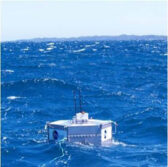 Commercial and government efforts are underway to build unmanned and autonomous underwater vehicles that can be used for naval warfare, environmental research and recovery mission, National Defense Magazine reports.
Commercial and government efforts are underway to build unmanned and autonomous underwater vehicles that can be used for naval warfare, environmental research and recovery mission, National Defense Magazine reports.
Yasmin Tadjdeh writes that Michael Toscano, president and CEO of the Association for Unmanned Vehicle Systems International, believes that UUV technology has limitless applications and will be a game-changer for industry.
“As the ability for us to show more and more business cases or market cases to utilize this technology [grows], you are going to see more of the technology come to bear,” he said, according to the magazine.
Jeff Smith, chief operating officer of Bluefin Robotics Corp., said the company has received positive feedback following a Bluefin-21 unmanned submersible’s mission to search for wreckage of the Malaysian Airlines Flight 370.
Tadjdeh reports the U.S. Navy‘s Office of Naval Research is working on a large displacement UUV designed to operate for at least 60 days in a littoral environment.
“The creation of LDUUV is intended to act as a significant force multiplier for the U.S. Navy and will help close warfighter gaps in a cost-effective manner,†said Frank Herr, head of ONR’s ocean battlespace sensing department, according to the publication.
General Dynamics has developed an underwater drone that is meant to be deployed off Littoral Combat Ships for mine countermeasure operations.
The Knifefish UUV underwent critical design and risk reduction assessments last year and was scheduled for in-water trials this past summer, according to Tom Mason, a senior program manager at General Dynamics’ advanced information systems unit.
Tadjdeh writes the Defense Advanced Research Projects Agency will allocate almost $14 million for the Blue Wolf UUV development project in fiscal 2015.
DARPA has also invested in a similar program, dubbed Hydra, with the goal of producing an underwater vehicle that would have communication, energy storage, command-and-control and ISR features.




